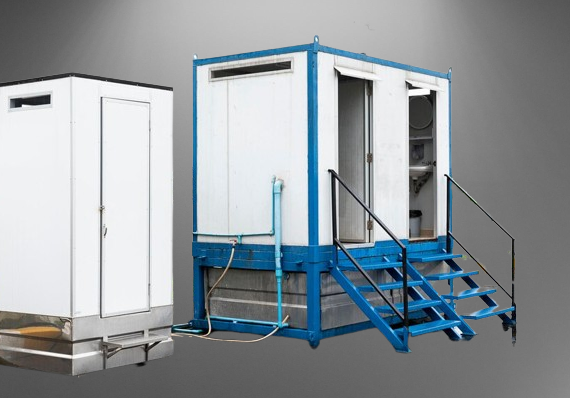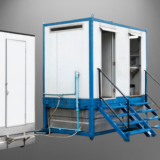Drop Shipping

Drop shipping is a fulfillment method in which a store does not keep the products it sells in stock. Instead, when the store sells a product, it purchases the item from a third party and has it shipped directly to the customer. This means that the merchant never sees or handles the product.
One of the main advantages of dropshipping is that it allows merchants to sell a wide variety of products without having to hold any inventory. This can be especially useful for small businesses or entrepreneurs who want to start an e-commerce business but don’t have the funds to invest in a large inventory upfront.
Another advantage of dropshipping is that it allows merchants to test the market for a product without committing to a large inventory. This can be a good way to gauge consumer demand and see if there is a market for a particular product before investing a lot of money in inventory.
However, there are also some drawbacks to dropshipping. Because the store does not have control over the inventory, it can be more difficult to manage the availability and quality of the products being sold. Additionally, shipping times for dropshipped products can be longer, which can be frustrating for customers.
Find a Drop Shipping Supplier
There are several ways to find suppliers for your dropshipping business:
- Wholesale marketplaces: Online wholesale marketplaces like Alibaba and SaleHoo connect dropshippers with suppliers. These platforms often have a wide variety of suppliers to choose from and offer tools to help you find and contact them.
- Trade shows: Attending trade shows in your industry can be a good way to find suppliers. Many shows have a section specifically for wholesalers and manufacturers.
- Directories: There are a number of online directories that list wholesalers and manufacturers who are willing to dropship. These directories often charge a fee for access to their list of suppliers.
- Google search: You can also try searching for suppliers on Google. Look for wholesalers or manufacturers in your industry who offer dropshipping.
- Contact manufacturers directly: If you have a specific product in mind, you can try contacting the manufacturer directly to see if they offer a dropshipping program.
When choosing a supplier, it’s important to do your research and make sure they are reliable and trustworthy. Look for reviews and ask for references before committing to working with a supplier.

Set up your store
To set up your online store for dropshipping, you will need to follow these steps:
- Choose an e-commerce platform: The first step is to choose an e-commerce platform to build your store on. There are a number of options available, including Shopify, WooCommerce, and Magento. Each platform has its own strengths and weaknesses, so it’s important to choose one that is right for your business.
- Design your website: Next, you will need to design your website. This will involve choosing a theme, adding your logo and branding, and creating pages for your products and other content.
- Add your products: Once your website is set up, you will need to add your products. This will involve creating product listings and uploading photos and descriptions. You may also need to set up a system for managing your inventory and pricing.
- Set up payment processing: In order to accept payments from customers, you will need to set up a payment gateway. There are a number of options available, including PayPal and Stripe.
- Test your store: Before you launch your store, it’s important to test everything to make sure it is working properly. This will involve placing test orders and going through the entire checkout process to ensure that everything is functioning correctly.
Once you have set up your store, you are ready to start promoting it and selling products.
See Also: Best Volume Pedals
Handle Customer Drop Shipping Service
As the merchant, you will be responsible for handling customer service inquiries and issues when you are running a dropshipping business. This will include answering questions about products, helping customers with returns and exchanges, and resolving any problems that may arise.
Here are some tips for handling customer service in a dropshipping business:
- Communicate with your customers: It’s important to stay in touch with your customers and keep them informed about their orders. This may involve providing tracking information and updates on shipping status.
- Be responsive: Customers expect timely responses to their inquiries and issues, so it’s important to be responsive and address their concerns as quickly as possible.
- Provide excellent customer service: The key to successful customer service is to be helpful, friendly, and professional. Make sure to go above and beyond to help your customers and resolve any issues they may have.
- Use automated tools: There are a number of tools available that can help you manage customer service inquiries and issues more efficiently. These may include live chat software, email automation, and customer support software.
- Have a clear returns and exchanges policy: It’s important to have a clear and easy-to-understand policy for returns and exchanges. This will help to prevent any confusion and make it easier for customers to resolve any issues they may have with their orders.
Conclusion
In conclusion, dropshipping is a retail fulfillment method in which a store doesn’t keep the products it sells in stock. Instead, when a store sells a product, it purchases the item from a third party and has it shipped directly to the customer. This means that the merchant never sees or handles the product.
Dropshipping can be a useful way to start an e-commerce business without having to invest a lot of money in inventory upfront. It can also be a good way to test the market for a product without committing to a large inventory. However, there are also some drawbacks to dropshipping. Because the store does not have control over the inventory, it can be more difficult to manage the availability and quality of the products being sold. Additionally, shipping times for dropshipped products can be longer, which can be frustrating for customers.
To start a dropshipping business, you will need to find a supplier, set up your online store, promote your store, process orders, handle customer service inquiries and issues, and manage inventory and pricing. With careful planning and attention to customer service, a dropshipping business can be a successful and rewarding venture.









